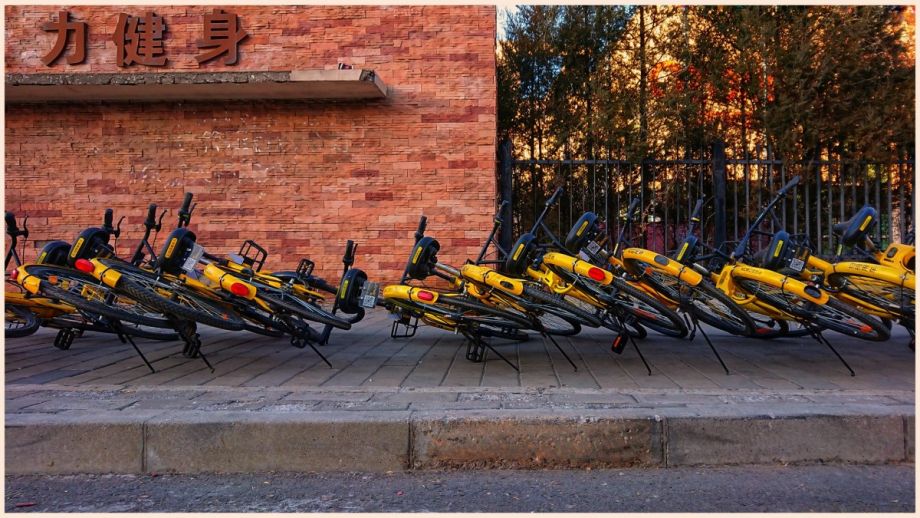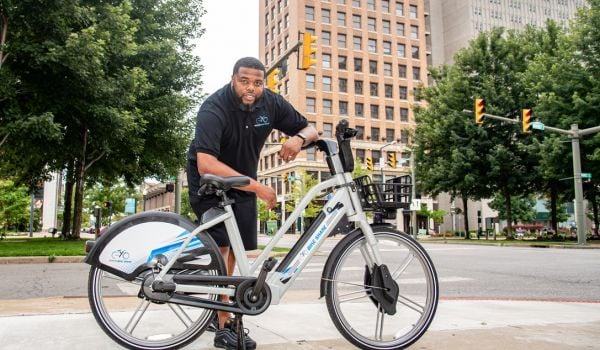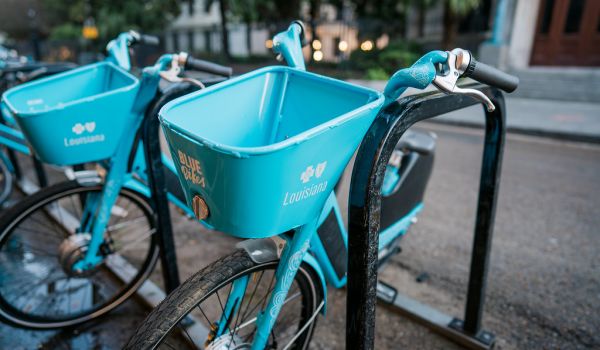While U.S. cities have seen dockless bikes come and go, often being replaced by e-bike and scooter-share instead, the opposite has been true in the roughly 400 Chinese cities with dockless bike share where 47 million dockless bike trips are taken every day. According to a September World Resources Institute report on dockless bike shares that analyzed programs in 12 Chinese cities and surveyed nearly 7,000 dockless bike share users, dockless bikes have proven to be an excellent last-mile urban mobility system in China.
Dockless bikes have enhanced connectivity to public transportation, reduced carbon emissions by replacing motorized trips, and even improved public health, despite air-quality concerns in China. As other cities around the world continue to grapple with management and regulatory hurdles surrounding dockless bike shares, what Hui Jiang and her co-authors found could help set the course for dockless bike success in the U.S.
“A lot of people, especially from the government side, have had challenges with adopting dockless bike sharing in cities,” Jiang, a research analyst at WRI China’s Ross Center for Sustainable Cities, says. That’s one of the reasons she chose to examine the subject.
Chinese cities have seen many of the same issues with dockless bikeshare that U.S. ones have: too many bikes, vandalism, improper parking, and demand outpacing safety infrastructure updates.
For example, Washington D.C. evaluated its dockless bikeshare program in 2018, a process that included public input. The city found that dockless bikes introduced some confusion with the parking requirements between the dockless options and the city’s docked bikeshare, Capital Bikeshare, leading to an increase of lost Capital Bikeshare bikes. In D.C., the dockless program showed no increased uptake among residents in areas less served by Capital Bikeshare.
The majority of the public concerns the evaluation team received coalesced around improper parking that obstructed pedestrian access, particularly parking that caused issues for those with disabilities or that infringed on private property. Last, as Jiang said is common among U.S. cities, dockless scooters were preferred over dockless bikes in D.C.
However, Jiang’s research has found several effective things cities anywhere in the world can do to make dockless bike shares successful. The report’s findings include: using scientific methods for tracking and managing fleet sizes; evaluating the performance of operators to determine permit renewals and terminations; regulating parking by by developing parking design standards, clear rules for using curb spaces; standardizing technology requirements across operators and the public sector; creating dedicated cycling facilities and infrastructure; and increasing road safety awareness through targeted education.
Jiang found that cities like Beijing and Guangzhou in particular have come up with successful ways to mitigate some of these challenges. Further, seven of the cities that Jiang’s study looked at used metrics like vehicle quality, operation and distribution, parking management and public satisfaction to evaluate an operator’s performance. They used those metrics to decide which bikeshare operators could renew their permits or increase the size of their fleet.
Big cities like Beijing, Jiang says, have invested in technology that allows them to more accurately track the locations of dockless bikes, particularly where they’re parked, across companies. They then make it a requirement for operators to outfit their bikes with the ability to run this technology, often through the locking mechanism. This way, if a bike isn’t left in an appropriate spot, the lock won’t work or users will receive penalty fees. Some cities, like Guangzhou, have built underground parking facilities to make sure users have no excuse not to properly park a bike.
Parking was an issue that Reuben Collins, a transportation planner with the City of St. Paul, saw even during the brief months that dockless Lime bikes were in the city in 2018. After appearing on city streets in August of that year, Lime eventually announced that it wouldn’t resume service after clearing the bikes for the winter.
“Our biggest issues weren’t with parking on the sidewalks, but in city parks where the bikes would, one way or another, get moved onto the grass and tip over,” staying there for some time, he said. He noted that Lime was a responsive partner, but that the bikes weren’t on the ground long enough to really iron out the issues. However, the city has resolved issues with scooters thanks to technology that allows for slow-down zones in parks and other areas.
Appropriate cycling infrastructure, like dedicated and protected bike lanes that make riders feel safe, was also a place where Chinese cities have hit their stride. “In many U.S. cities they have this dedicated bike lane on the street, but they don’t have barriers between the bike lanes and the vehicle lanes” like many Chinese cities do, Jiang says.
While St. Paul has been busy prioritizing making the streets safer for bikes and scooters—“2020 was the biggest year in city history in terms of building new bikeways in St. Paul and we’re proud of that,” Collins says—it remains to be seen whether or not dockless bikes will return to Minnesota’s capital city.
“If any company approaches us to operate a bike share, we’d welcome that with open arms, but we haven’t yet found any vendors, docked or otherwise, in St. Paul,” Collins says.
EDITOR’S NOTE: We’ve corrected the spelling of Hui Jiang’s last name.

Cinnamon Janzer is a freelance journalist based in Minneapolis. Her work has appeared in National Geographic, U.S. News & World Report, Rewire.news, and more. She holds an MA in Social Design, with a specialization in intervention design, from the Maryland Institute College of Art and a BA in Cultural Anthropology and Fine Art from the University of Minnesota, Twin Cities.
Follow Cinnamon .(JavaScript must be enabled to view this email address)
















